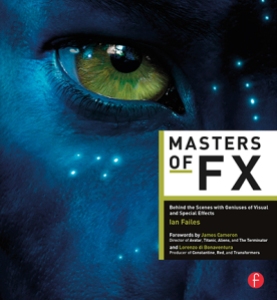Who ya gonna call (to do vfx)?
Posted in: Animation
Paul Feig’s Ghostbusters is out this weekend and takes the franchise to a whole new level. The original films were masterclasses in using visual effects to help tell the story – and telling jokes too. For my book, Masters of FX, I got to talk to both Richard Edlund, the original film’s visual effects supervisor and John Bruno, the visual effects art director. Here’s some excerpts from the book about how they made Slimer, Marshmallow Man and the Gozer Temple effects from the 1984 film.
Slimer was originally called Onion Head
John Bruno: In discussing the ‘Onion Head’ I had a long conversation with Dan Akroyd, who said it was supposed to be (his friend) John Belushi. He said the best way to think about that character was Bluto from Animal House—he was a slob. Always. A disgusting blob. He was supposed to be floating three to four feet off the ground. The character was created by a performer, Mark Bryan Wilson, wearing a foam rubber suit that was painted lime-green and filmed in front of black cloth. No blue screen or green screen. Mark’s legs were wrapped in black duvateen so you couldn’t see them, and the suit rested above his waist. His mouth and eyes were operated by puppeteers dressed in black, sitting below and behind him. Someone else’s arm operated the tongue. The camera was locked off and we would move ‘Slimer’ around according to the shot. To make him look hyper-kinetic we shot the footage at six frames a second. It was just such crazy footage that in dailies we’d be laughing our asses off.
Making Marshmallow Man

Richard Edlund: There’s one shot where the guys are on top of Gozer’s temple and they’re looking down and see the Marshmallow Man walking down on Central Park West and that’s basically on a miniature. It’s a miniature street, a miniature Central Park, and then there’s a matte painting on the left and the building on the right is a matte painting. The guys are shot with a bluescreen. The cars were about 9 inches long. It required forced perspective shot matte painting, miniatures shooting 60 or 72 frames per second just to give the Marshmallow Man weight.
For shooting the plate where the Marshmallow Man. comes out and stomps onto Columbia Circle, that was a bluescreen Marshmallow Man, and we had all the New York extras, who are different from Hollywood extras. They’re just bodies who get moved around by ADs. But in NY they’re all like budding actors – all want to be actors on Broadway. We only got one take. Our DOP László Kovács had to light the entirety of Columbia Circle and we had 5296 – 250 speed film. László had every arc light in New York turned out on that evening. We only had one take because we did in a whole bunch of taxi cabs in the foreground. It was pretty fun. And it was real cold – we were in November. I had a short jacket on and I wish I didn’t!
Gozer Temple

John Bruno: I can actually recall today the Gozer temple shot numbers—GT73 and GT76. We had to be finished on a Sunday. I’d walked into Boss Film, all the lights were on, and over the loudspeakers Jimi Hendrix’s Purple Haze was playing really loud. I walked into the optical department and the doors were open—they’re never open because the room has a vacuum-sealed entrance for dust. I could hear the 65mm optical printer running. There was an empty bottle of Jack Daniels lying on its side and next to the printer was a big pile of metal shavings. The mechanism for the printer was worn to a stub so it was grinding metal to metal. On a couch upstairs was our optical printer artist. He said, ‘Bruno, GT73 and GT76 are finished!’ And then he fell back to sleep. That was just two weeks before the film was released.

Post a Comment